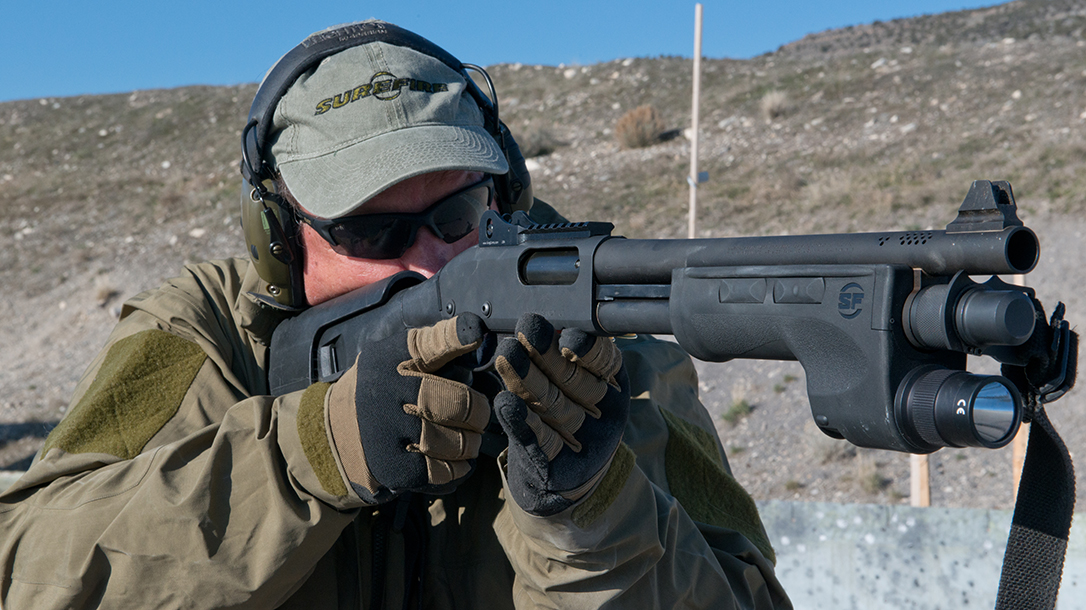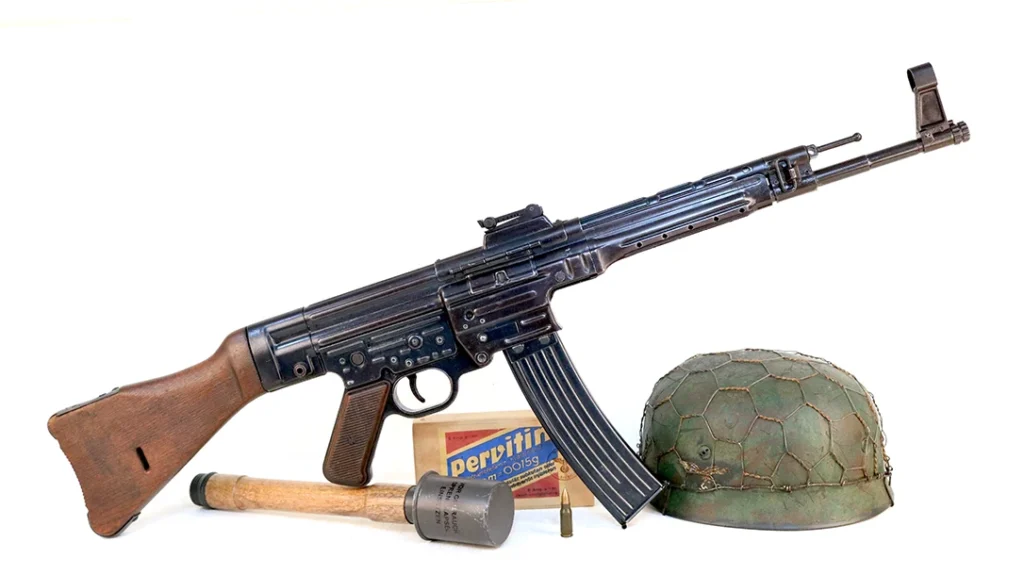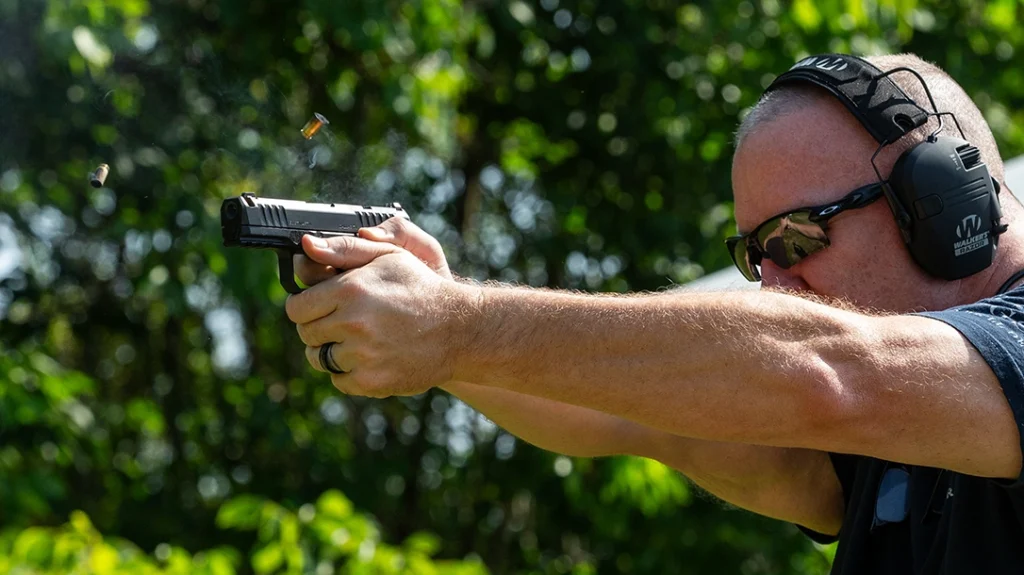
One of the most common questions I get as an instructor is “What should I practice at the range?” Among the effective methods to enhance shooting skills is Dry Fire practice, which is crucial for honing technique without live ammunition. It seems like a simple question, but it may actually be the most important one. Not everyone learns with the intention of improving. Some are satisfied with familiarity. Most are concealed-carry holders wanting to do so safely. A few want to learn to use their firearms in a fight, and fewer still look past that. One hopes they move on to more training, but that remains the exception. Time is probably the biggest hurdle, then cost, then the availability of good instructors or even a range they can use.
That’s why my answer is a surprise to many: “Only what you need to.” Your range time should be focused on those drills you cannot manage “dry” anywhere else. If you intend to improve, you must practice without any ammunition far more than you would on the range. It’s true for pistols, rifles, shotguns and everything else, including hand-to-hand combat. This concept has been the mainstay for practical self-defense training for thousands of years. Dry Fire is essential.
Advertisement — Continue Reading Below

The Dry Fire Mindset
Weapons manipulations are mastered through repetition. Once basic skills are properly learned, they must be repeated to improve. And most of the things you do with a firearm do not involve firing, like reloading, aiming, running the bolt, loading and unloading as well as refining your stance, grip, position, presentation and even movement. If recoil or accuracy is not a requirement, then the skill can be practiced without ammunition, or at least without live ammunition. Most drills can be practiced with dummy rounds in your living room or basement. Add lasers and other training devices and you can even practice trigger manipulations in some cases. Generally, dry firing is a far better way to practice these skills, and it sets you up to apply them on the range so you can make the most of your limited time and availability.

Advertisement — Continue Reading Below
Get Serious
Now, what mindset do you need to approach dry firing? It is critical to cultivate a serious and determined attitude. This isn’t playtime—it is focused practice time. Failing to practice dry with the proper mindset is precisely how people get injured, or worse. This means you use the proper equipment at the proper time, in the proper place, with as few distractions as possible. Think of it as study, or homework—what you cannot have is distractions. If you can’t practice without distractions, then find a better time or location. And if you get distracted during a drill, start all over again and check the area.
Set up a practice space that provides all the room you need, including proper lighting. Remove any live ammunition from the room. Check your clothing, especially your pockets, and anything within reach to make sure no live ammunition can be introduced. And all the basic safety rules still apply. Never point your firearm at anything you are not prepared to destroy. This may sound counterintuitive since you are dry, but it’s a rule to live by.

Advertisement — Continue Reading Below
Necessary Dry Fire Gear
The firearm and the skills practiced determine equipment needs. First on the list is some good dummy or practice ammo. All-plastic rounds are the least costly but can be problematic depending on the firearm. Some pistols won’t eject them, and rifles are even more picky—I’ve had them get stuck. After a few rounds, the plastic “rim” gets damaged and won’t work. Better options use plastic bullets and brass casings. Most of these will work longer and won’t fail to eject when the slide or bolt is run with some authority. All-metal rounds can be the best choice, especially for rifles, but just make sure they won’t damage your chamber. Several companies make them, and though they tend to be more expensive, they’re worth it, especially for precision rifles.
You can also make your own practice rounds if you reload. Just make sure they are very clearly marked so they don’t end up in a carry magazine, and real ammunition isn’t mistaken for practice rounds. Shotgun shells work best with brass; the all-plastic ones work, but most shotguns tear them up pretty quickly.
Dry Fire With Holsters & Slings
I always practice dry with a holster or a sling because it’s safer. That way you are always in control of the firearm rather than setting it on a table or other convenient surface. This is critical if you have children or loved ones around. If practicing with your carry gun, use your EDC holster and magazine pouches. If not, use a range holster, because holster familiarity is essential.
Advertisement — Continue Reading Below
For long guns, have a safe place to set them if they are not slung on your person, and use that space only during your practice. When you’re finished, put the gun away immediately. Remember that this is serious business, so you’re always treating the firearms as if they’re loaded, even if they’re only loaded with dummy rounds. It may sound a bit overkill, but having investigated several “accidental” shootings over the years while people were “practicing,” believe me, it’s not.

Drilling Down
So, what should you actually practice? When it comes to pistols and carbines, all of the manipulation skills are fair game: loading, unloading, press-checks, even trigger pulls. Set up stoppage drills just like those learned in class, using dummy rounds. One trick is to remove the spring and follower from an old magazine and replace the basepad. That way you can perform both Type 1 and 2 stoppage drills without having to reload your magazines. Since the slide or bolt won’t lock open, you can “tap, rack and assess” repeatedly without ejecting rounds. You can also lock the action to the rear on a Type 2 malfunction, working exactly as you would in the field. This works well for pistols and even better on carbines.
Advertisement — Continue Reading Below
Tube-fed shotguns are no different. Practice loading, unloading, reloads off the sidesaddle, selecting slugs, even running the action on a pump shotgun. You can’t really simulate running a semi-auto dry, but you can do just about everything else. For hunting and precision bolt actions, you can still practice your trigger pull and follow through.
Dry Fire
You can practice your drawstroke and reholstering using your EDC gun, equipment and dress. Not only does this build your skills, but it’ll help you refine your gear. A dry-fire drill is a much better time to figure out you can’t get the gun back into the holster than on the range or, worse, in a fight. On long guns, you can practice various sling positions: getting into them, out of them and returning them to your shoulder or at rest. Learning how to safely and efficiently bring your weapon of choice to bear and back to security is critical, and practicing it dry provides all the time you need to work it out safely, quietly and properly. You can use both your primary (long gun) and secondary to work out transitions. Carry two pistols and you can do the same thing.
Competition Concerns
Most competitions these days require movement and the use of bags, slings and other gear. That’s why I like to set up a plastic barrel in my martial arts dojo/office and work around it with my precision rifle and gear. You can do the same thing with a ladder, a chair or anything else you might think of. This allows you to figure out which bag to use (or not), sling positions and, just as importantly, moving safely into and out of position. Throw in dummy rounds and you can run the bolt, which is critical in competitions. For 3-Gun or pistol competitors, you can hone in on your footwork and timing.
Advertisement — Continue Reading Below
Finally, the most important skill, especially after working out the simple stuff, is knowing your environment. Grab a blue gun and clear your house. Work out where you will go, how to gather the kids, how to escape and your communication methods. Determine how to get from room to room, how long it takes and where the best points of cover and concealment are. Practice with your family, and do much of it with one hand, since you’ll probably have the other one around your kids. From which locations can see an intruder without him spotting you? You can even strategically place mirrors, vases or anything reflective so you can see the blind spots, putting anyone entering your home, office or workspace at a distinct disadvantage.
Dry Fire Advantages
Every top competitor I’ve met practices dry more than they do with live ammo. A new wave of dry firing practice commences after acquiring new gear. Many competitors will practice in their hotels the night before day one. Many tactical teams set up the target house in a parking lot and work it dry until everyone has their assignments down pat. Anti-terrorist units build entire structures to simulate an entry and then run it dry for hours, or even days.
No one who intends to excel at firearms practices solely at the range. That’s a great example for us mere mortals who just want to get better, and it has been for millennia. So, practice. Certainly get to the range, but also work in a healthy dose of dry practice. The more you do, the better prepared you will be when everything, including your life, is on the line.
Advertisement — Continue Reading Below
























